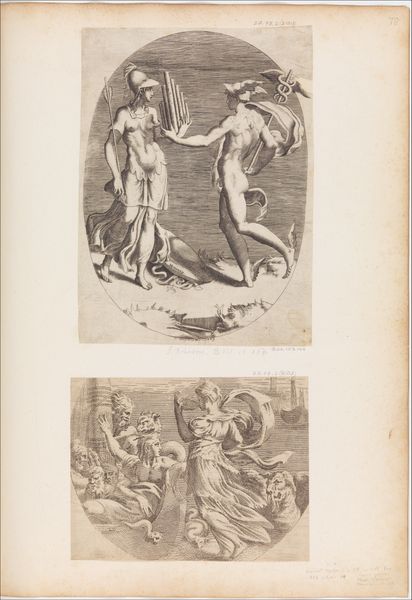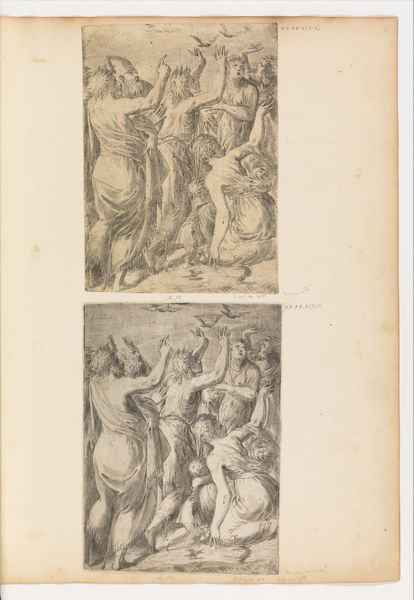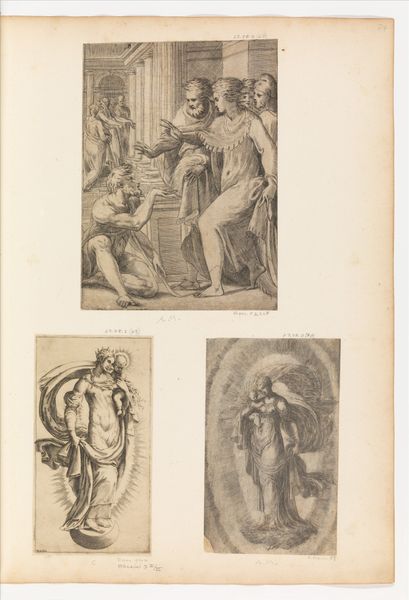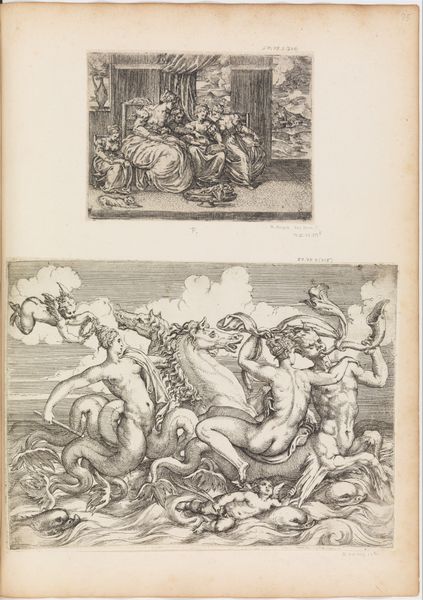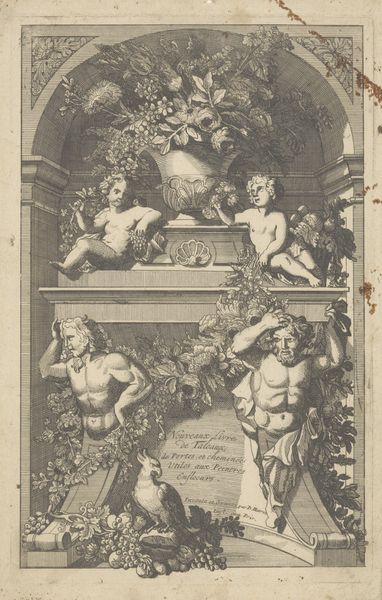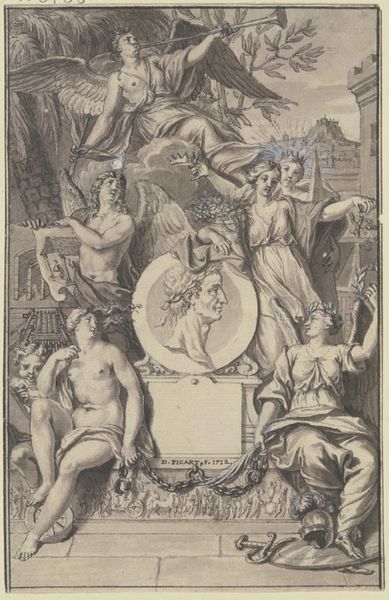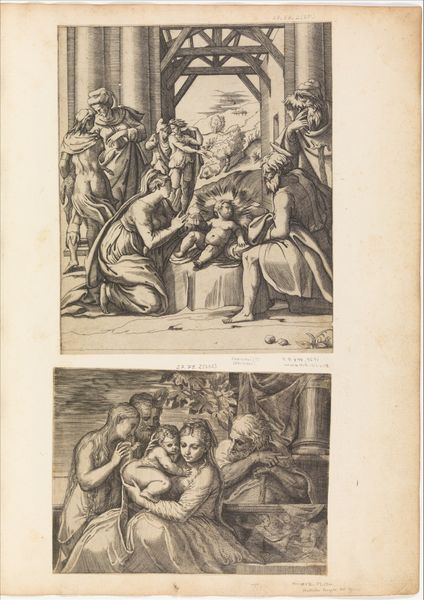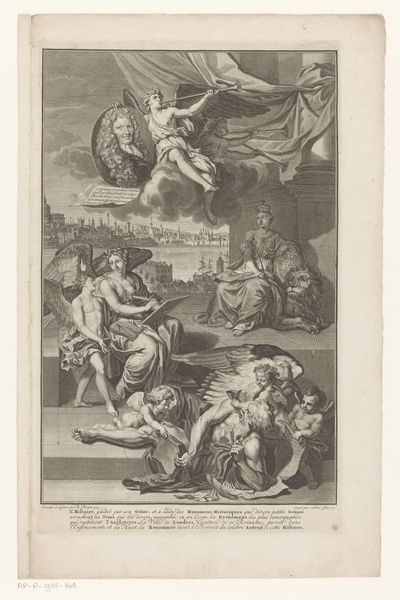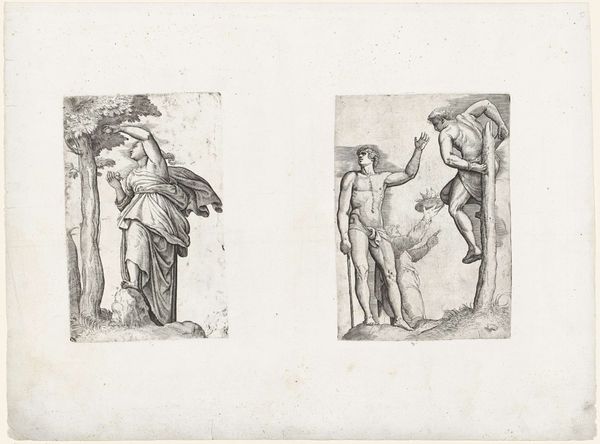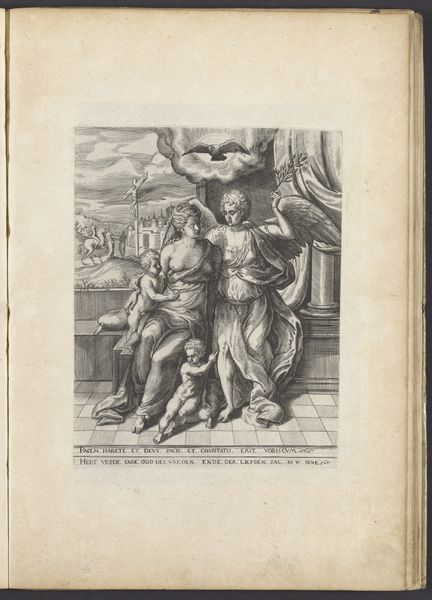
drawing, print, engraving
#
drawing
#
allegory
# print
#
figuration
#
history-painting
#
italian-renaissance
#
engraving
Copyright: Public Domain
Curator: Here we have Giulio Bonasone's "Circe and the Companions of Ulysses," an engraving from the 1540s that draws us into a complex mythological narrative. Editor: Wow, what a swirling sense of unease. I'm immediately struck by the raw emotion practically leaping off the paper despite the delicate lines. It's almost like I've stumbled into the middle of a dark dream. Curator: Indeed, the scene is rife with transformations, pulling directly from Homer's Odyssey. Circe, the sorceress, uses her magic to turn Ulysses's crew into beasts. This work offers insight into Renaissance interpretations of classical texts, particularly through a moral lens. It's as much about power and transformation as it is a warning against succumbing to base desires. Editor: I see what you mean, that looming figure and those grotesque creatures feel so... urgent. It reminds me of how easily we can all be led astray. So what's the statement here? Curator: In the 16th century, depictions of Circe often served as allegories of temptation and the dangers of unchecked female power. By portraying Ulysses’s men degraded and animalistic, the artwork prompts consideration about the role of rationality versus primal instinct and how it intersects with early modern gender dynamics. Bonasone does a splendid job depicting the moment men's control is taken, literally, as men transmute. Editor: Bonasone captured that internal conflict! I feel like I’m glimpsing my own inner demons and aspirations at once. So I take it this artist wanted folks to reflect about power itself? And our animalistic past? Curator: Certainly, these early printmakers circulated powerful allegories to wider audiences. Through stark visual language, he encourages dialogues about self-control, masculine identity, and resistance to temptation which certainly permeated Italian Renaissance thought. The relatively mass produced engraving allowed greater conversation about such virtues and pitfalls in society. Editor: It’s fascinating how art from so long ago can speak so directly to our current struggles, isn’t it? That internal battle is eternal, I suppose. Well, my mind feels appropriately twisted now! Curator: As does mine. I am reminded to remain self-aware as Bonasone implores of his Renaissance contemporaries.
Comments
No comments
Be the first to comment and join the conversation on the ultimate creative platform.
